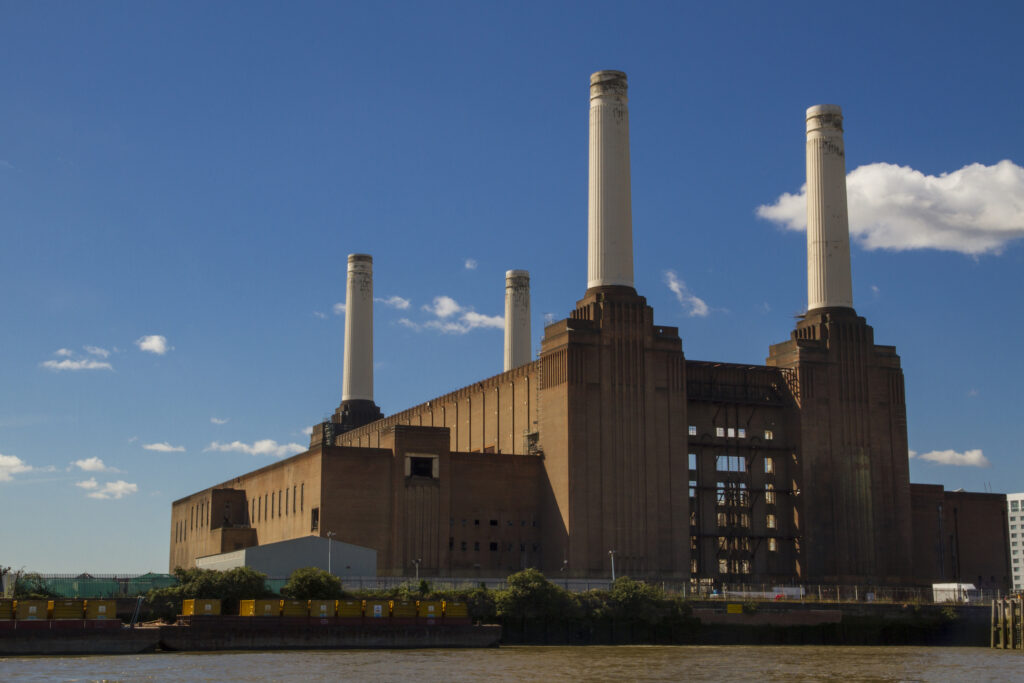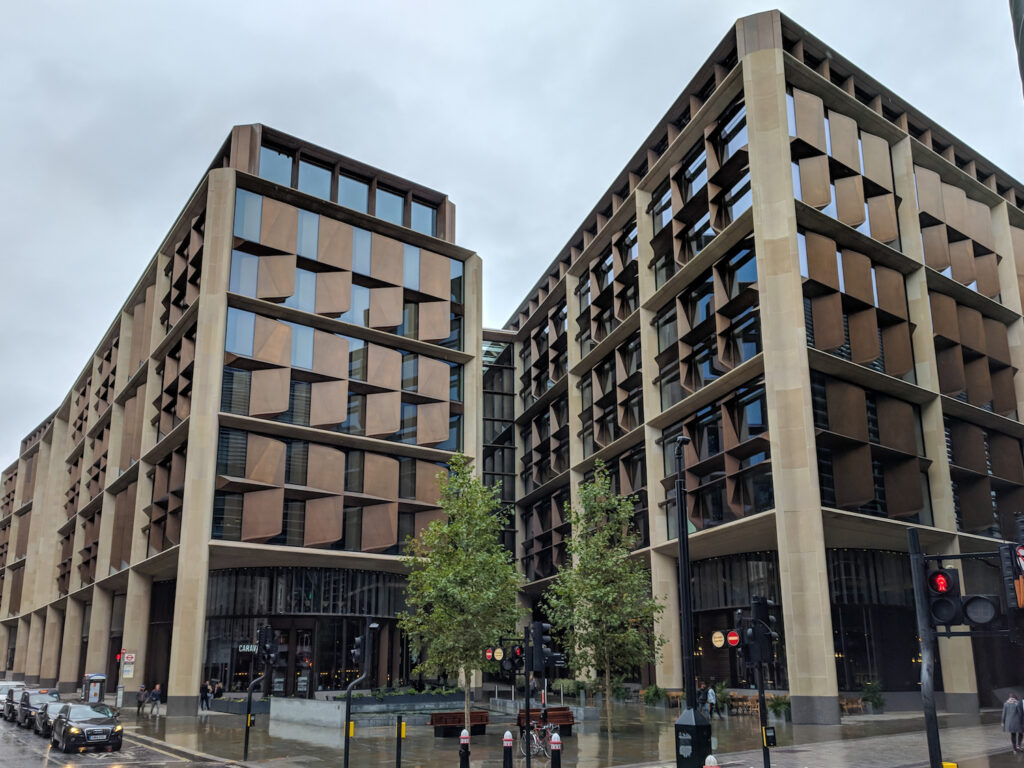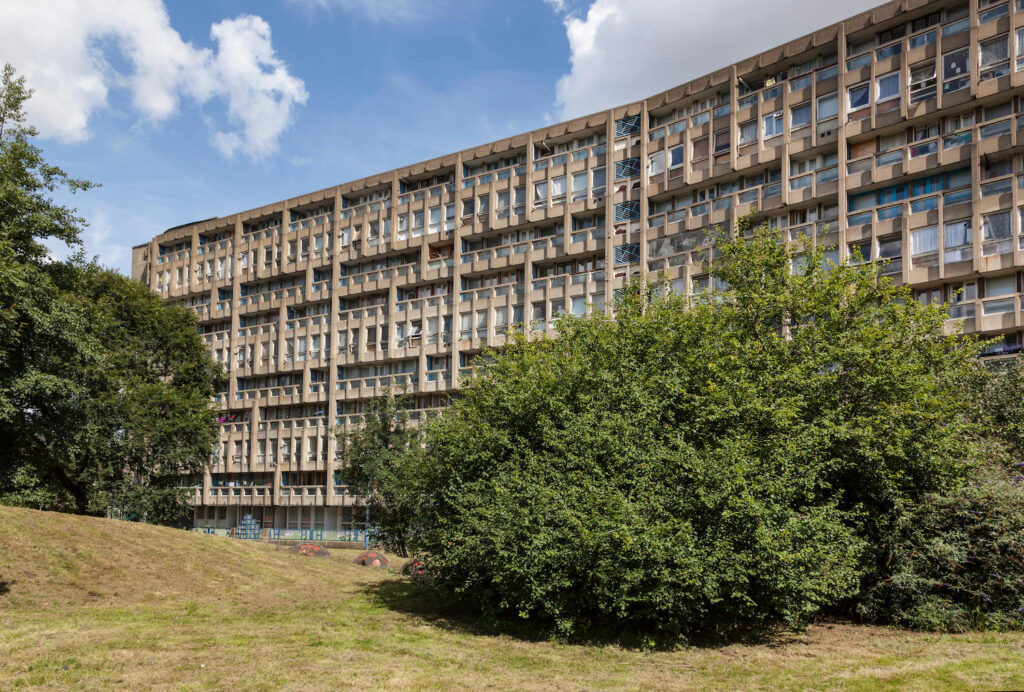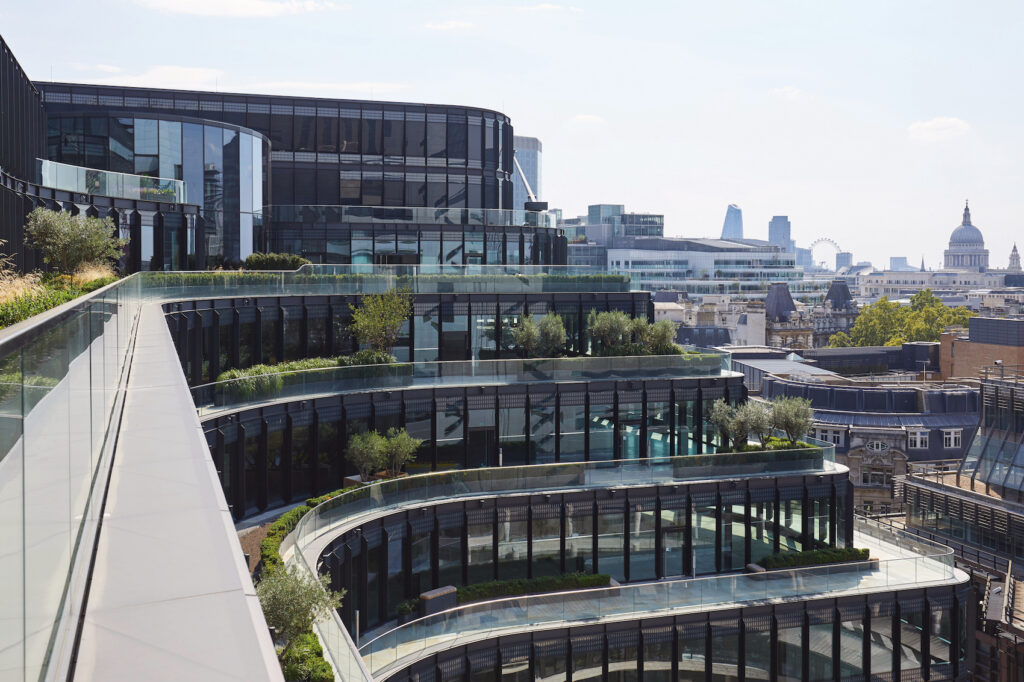Ewa Effiom dives into the significance of conservation in the debates surrounding contemporary architecture, beauty and functionality.
All architecture, being speculative by its very nature, is drawn from the past. Whether intentionally or not, the required historical extraction lies, quite conveniently, somewhere between the extremes of nostalgia and amnesia. Nostalgia, the rose tinted glasses through which we distort history and the socioeconomic realities thereof in order to make it more palatable, and amnesia, which is supposedly a rejection of that past altogether. The former is where conservation, i.e. the preservation and repair of architectural objects, exists.
Amateurs often ask why architects ‘no longer design buildings like they used to’. Like most things, the answer is a lot more complex than they anticipate, but for the sake of brevity, we can put it down to developments in economics, human rights and manufacturing. What they are really asking is why architecture is no longer ‘beautiful’, as if heritage construction techniques and the associated ornamentation are a prerequisite of this beauty, and modernism, which is what brought a more dignified ‘architecture’ to the masses, was its demise. This idea of beauty in architecture is a loaded one—one that is steeped in Kantian aesthetics.1 We know we like it, but the more pertinent question here is, is it good?

Beauty and function
Beauty, an Ancient Greek notion, often refers to Harmony, Proportion, Scale, Symmetry, Pattern and Decoration, all of which are appropriate in conversations about the arts. In architecture, however, they distract from the key aspects that separate it from the arts. Architecture is forever bound by function, incessantly shackled to the need to provide shelter. Simply put, architecture is either of use or not architecture at all. Therefore, it cannot be qualified in these terms. Here, pragmatism is both a crutch and an arbiter. Conversations about beauty obscure those about use and segregate people according to creed, as the idea of beauty and aesthetics is inseparable from taste, whether that be of an individual or a group. The process of delivering architecture is one that rationalises different requirements to create a unified whole. Applying the concept of taste to buildings ignores their complexity, which is actually determined by briefs, budgets, building physics, regulations and climate, and contrarily to common belief, is not just form. Speaking in visual terms pushes architecture into the realm of subjectivity and presents it misleadingly as a more straightforward endeavour than it is.
Furthermore, allocating such importance to beauty implies that aesthetics is the quality in architecture that matters most. Ugliness is therefore considered to be beauty’s absence, and this is supposed to be what allows you to distinguish mere buildings from architecture—whether the architect tried to adhere to beauty standards like the Parthenon, or simply vernacular or industrial standards. But what about the Great Mosque of Djenné or the Battersea Power Station? Some would argue otherwise, but these examples suffice to show this view to be unequivocally false. The error implies that what is utilitarian or economic could never be beautiful, which pushes architecture into the interminable conversation about class, as the logical conclusion of this line of thought is that architecture only exists in the presence of capital. This is the reason why most pre-war landmarked buildings in the UK are in areas that can be considered upper class, and those not deemed to be worth keeping are mostly in historically working-class areas.

Only in the 19th century, with its demographic booms and the increased need for housing, was utility incorporated into the definition of beauty as technology enabled us to build more economically. Virtuousness and the ability to help the fellow human were increasingly discussed and accepted as a precondition of architectural good. Since then, there has been a tendency of architectural beauty leaning towards efficiency. This broadening of the definition allowed us to see beauty beyond the visual, also giving us a lexicon whereby to vocalise architecture’s ability to do. Still, there have always been those who disregard this. Some derided Functionalism by calling it an ‘impoverished aesthetic’, an indication that they were incapable of seeing its social value and resource efficiency as characteristics worthy of architectural exploits.2
Another example is the demolition of Pruitt-Igoe, the housing projects generally considered as a representation of the failure of modernism supposedly because they were not beautiful enough to encourage their own upkeep, all the while disregarding their very raison-d’etre, which was the creation of socially affordable housing.
Despite this predisposition towards frugality, clearly, the antecedent concept of beauty in architecture and the ensuing exclusivity clearly remains. The highest echelons of beauty are reserved for those able to afford the luxury. The 2018 Stirling Prize was a clear manifestation of this—the United Kingdom’s building of the year cost one billion pounds. At least the Bloomberg Headquarters wasn’t built using legally defined slave labour, as we take a dim view of that today. Our apathy towards questionable socioeconomic factors associated with our buildings has somewhat lessened, but there is still a long way to go, the last remnants of it being both gnomic and rationalised by a dedication to or struggle for this ever so elusive ‘art’, or ‘beauty’, if you will.

The genealogy of conservation
The genealogy of this conservation of beauty is interesting in itself. The first piece of legislation dedicated to conservation was adopted in 1790s France, in the aftermath of the French Revolution3. The second was adopted in Victorian England in 1877.4 In the 90 years between the two, cement, stethoscope, anaesthesia and photography were invented. This could be seen to imply that conservation is itself a product of modernity and not its antagonist, as is generally thought. The key conundrum at the heart of any sort of modernisation or change is that ever-persisting question—what should we keep? The accompanying answer is often—the elevating or the beautiful. Conservation lies at the heart of this interrogation.
Conservation started with ancient monuments, then moved on to religious buildings, now these efforts have been extended to structures with less and less sacred or theological substance, to the point that we now preserve department stores and factories, which are without doubt monuments to capitalism and consumerism. Battles for the conservation of buildings often incite deep emotions, especially those that want to uphold an idea, any idea of supremacy. Those wanting to exhibit hegemony make decisions about which artefacts merit protection or not, a hark-back to the rose tinted glasses, upholding a history that is heavily redacted. This is exemplified by the toppling of the statue of Edward Colston in the aftermath of Black Lives Matter in 2020—his fabled heroism was a posthumous fabrication, but still incited feelings very close to zealotry in some.
The first piece of legislation dedicated to conservation was adopted in 1790s France, in the aftermath of the French Revolution3. The second was adopted in Victorian England in 1877.4 In the 90 years between the two, cement, stethoscope, anaesthesia and photography were invented. This could be seen to imply that conservation is itself a product of modernity and not its antagonist, as is generally thought.

In conservation, factors other than the preservation of history are unquestionably at play—namely tourism and globalisation, and, consequently, authenticity and ancientness, which pushes the subject into the abstract. This is particularly beneficial to those who stand to gain considerable wealth from the appropriating vast swathes of land in cities, meaning that they can push their own agendas and act with impunity as a clear idea of beauty isn’t set.
Post-war architecture was mainly concerned with social welfare and paid for with public funds. This social architecture was made impossible through Keynesian manoeuvrings, toward the deregulation of the market economy, a direct afront to Keynes. Many of this almost altruistic architecture were destroyed, as the legacies of these estates like Robin Hood Gardens in East London, designed by Alison and Peter Smithson, fell victim to development pressures to demolish them. Conservationists fight to preserve market-averse social housing projects as the ‘market’ will predictably mount an assault on anything that threatens the ability for architecture to absorb capitalist surplus. Today, social architecture of that ilk is made impossible by the deregulation of the market economy.
After certain developments in economics, human rights and manufacturing, buildings were no longer luxury items, but a necessity. But this is no longer the case—the market economy that today has infiltrated every all such autonomies,y has changinged architecture. This transfiguration happened concurrently with Frank Gehry’s Guggenheim and the infamous Bilbao Effect. The rise of the oft disparaged ‘starchitect’ is to blame for the unceremonious death of this architecture of necessity. Architecture has become little more than a mechanism to absorb capitalist surplus. In light of this, conservation is a refuge from this incessant need for new exaggerated form-making peddled as iconic buildings, which is the typical starchitectural response to the market’s demands. In the words of Aaron Bastani: ‘The enemy of beauty isn’t “modernism”; it’s a society built on maximising profit and shareholder value’.5 In a profession that is fundamentally supposed to change things, conservation is a progressive act and perhaps even its only salvation.

Architecture and social sustainability
Architecture’s recent undeniable entanglement with capitalism, which still continues to be paplable to an extent, happened in an era where there was very little consideration of resource use. Lessons from the post-war period were co-signed to oblivion as architecture and economics shared a foundation in the machinations of capital. The 2008 financial crisis marked another change, now reinstating a focus on efficiency and most importantly a consideration of the natural environment—a focus that was niche until then. An eye-opening example of this is Herzog et de Meuron’s re-use of the derelict Bankside Power Station for the Tate Modern in 2000, which was considered to be bold back then. Very soon after the financial crash, adaptive re-use took hold in the European and North American contexts, with Carl Elefante declaring, much later that, ‘The greenest building is the one that already exists’. All of a sudden, those who would protect the buildings that are remnants of former national prowess unexpectedly converged with those who would protect them for the environment’s sake. Under the tutelage of both, conservation could become architecture’s amorphous successor—an evolved form of architecture and not, as some would claim, avoidance of it altogether. Its indeterminate aesthetic antithetical to the architectural indulgences of the past thirty years, somehow starts to form its future. The Stirling Prize for the Bloomberg Headquarters has been four years latersr indeminfiedindemnified by the nomination of 100 Liverpool Street by Hopkins Architects, an adaptation of a 1980s office building. This is interesting not only because it was an already-existing building, but also for the time elapsed between its construction and refurbishment, which was a mere four decades. Together with the awarding of the Pritzker Prize to Anne Lacaton and Jean-Philippe Vassal in 2021 for their light-touch approach to the refurbishment of, dare I say, utilitarian buildings, is most definitely an indication of a pattern here.

It is important to state remember that no vestige of autonomy is safe from the tainting lure of capitalism. A recent example of this is the refurbishment of the Balfron Tower, which was Ernő Goldfinger’s prized jewel. A Marxist architect’s vision of equality and community has been ravaged by contemporary markets and turned into a parody of the original vision—all of this to cater to London’s absurd housing market.
Despite this unfortunate footnote, the retreat that is conservation, and maybe more specifically adaptive re-use, is both an act of escape from a difficult situation and a new origin, a safe starting place from which one can proceed free, or almost free, of the oppression of market economics. This ‘mediating’ aesthetic, whereby architecture helps buildings to regain the significance that they haven’t been able to preserve organically, advances our understanding of architecture’s potential for cultural relevance. It also highlights that it is not possible to long for past architectural epochs without this mediatory act—the act of uncovering significance by acting directly upon it, whether intentionally or not.

One thing is clear—restoring these sensitivities is the key to seeing virtues like social sustainability and energy performance, and using them as criteria by which to evaluate architecture. Evaluating it on the basis of the ambiguous historical notion of beauty alone is no longer fit for purpose. With the impending climate catastrophe, the idea of beauty can no longer be inextricably linked to excessively extractive processes. In the past, efficient buildings using local materials would have been seen as cheap, ugly and not advancing the discipline of architecture, whatever that means. If this view was to be maintained, then history would have rejected most of what many consider to be architecture. This would be a world in which the reigning capitalism relies on continual growth and excess, a model we know not to be sustainable; a world where architecture contributes to society in a way that is very different from how our predecessors anticipated it; a world where architecture continues to contribute 42% to our very extinction.6 For what? A very limited concept of beauty that has been repeatedly disproved? Surely not.

EWA EFFIOM is a London-based Belgo-Nigerian architect, writer and producer.
HEADER: the Great Mosque of Djenné. Photo by Ruud Zwart. Wikimedia Commons
PUBLISHED: Maja 109-110 (summer-autumn 2022) with main topic Built Heritage and Modern Times
1 Hannah Ginsborg, “Kant’s Aesthetics and Teleology”, The Stanford Encyclopedia of Philosophy (Fall 2022 Edition), eds. Edward N. Zalta & Uri Nodelman, https://plato.stanford.edu/archives/fall2022/entries/kant-aesthetics/.
2 Saul Fischer, ‘The Philosophy of Architecture’, The Stanford Encyclopedia of Philosophy (Winter 2016 Edition), ed. Edward N. Zalta, https://plato.stanford.edu/entries/architecture/.
3 Lauren M. O’Connell, “Redefining the Past: Revolutionary Architecture and the Conseil Des Bâtiments Civils.” The Art Bulletin 77, no. 2 (1995): 207–24, https://doi.org/10.2307/3046098.
4 https://historicengland.org.uk/whats-new/features/conservation-listing-timeline/.
5 https://unherd.com/2022/07/the-socialist-case-for-trad-architecture/
6 https://www.ukgbc.org/wp-content/uploads/2021/11/UKGBC-Whole-Life-Carbon-Roadmap-A-Pathway-to-Net-Zero.pdf





